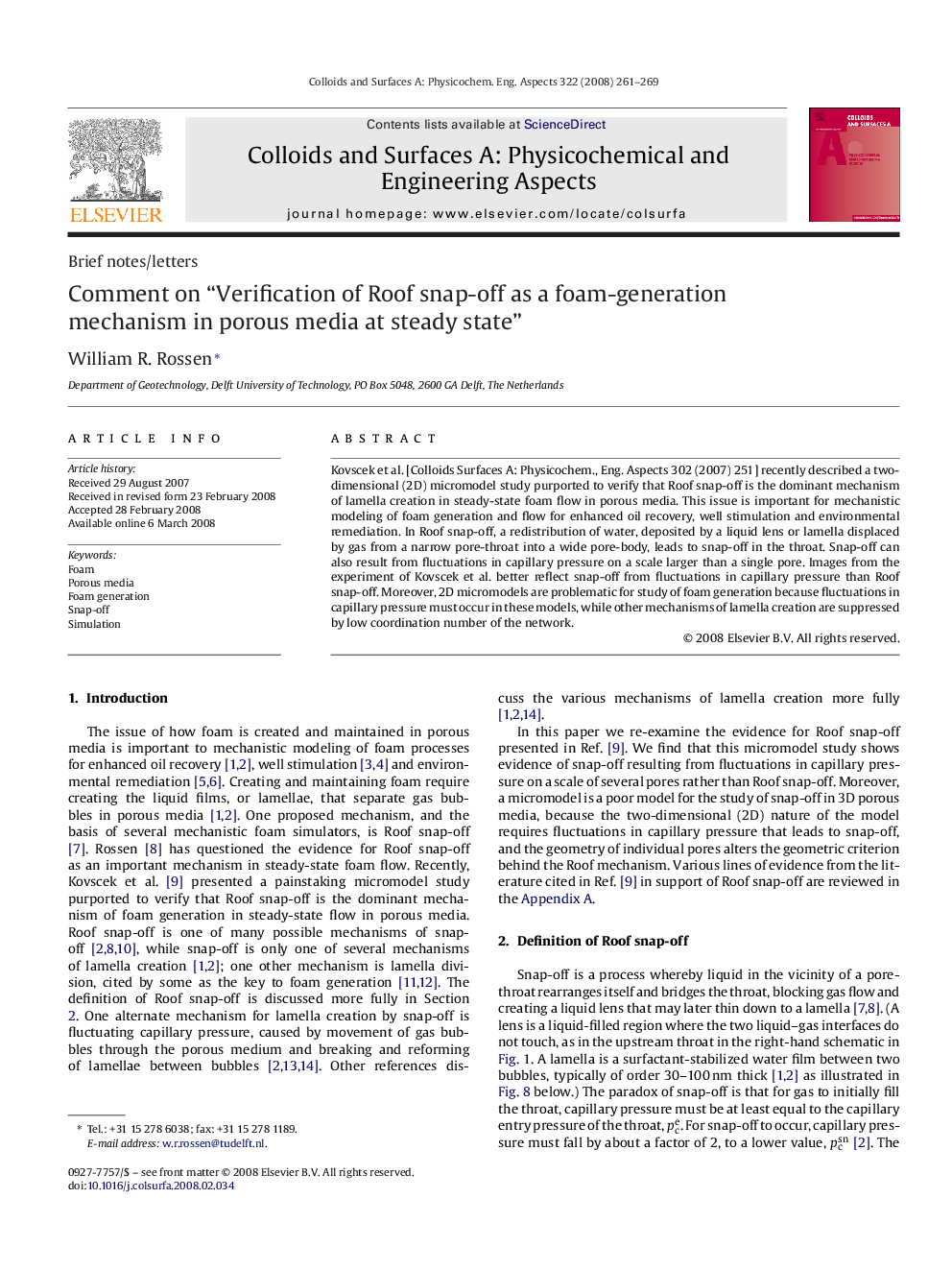| Article ID | Journal | Published Year | Pages | File Type |
|---|---|---|---|---|
| 596523 | Colloids and Surfaces A: Physicochemical and Engineering Aspects | 2008 | 9 Pages |
Kovscek et al. [Colloids Surfaces A: Physicochem., Eng. Aspects 302 (2007) 251] recently described a two-dimensional (2D) micromodel study purported to verify that Roof snap-off is the dominant mechanism of lamella creation in steady-state foam flow in porous media. This issue is important for mechanistic modeling of foam generation and flow for enhanced oil recovery, well stimulation and environmental remediation. In Roof snap-off, a redistribution of water, deposited by a liquid lens or lamella displaced by gas from a narrow pore-throat into a wide pore-body, leads to snap-off in the throat. Snap-off can also result from fluctuations in capillary pressure on a scale larger than a single pore. Images from the experiment of Kovscek et al. better reflect snap-off from fluctuations in capillary pressure than Roof snap-off. Moreover, 2D micromodels are problematic for study of foam generation because fluctuations in capillary pressure must occur in these models, while other mechanisms of lamella creation are suppressed by low coordination number of the network.
